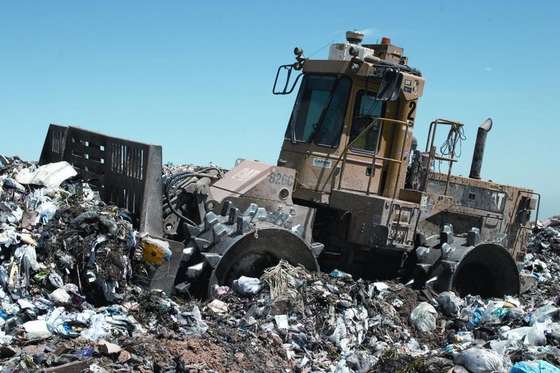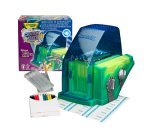| 50 Straw Bale House Plans: See pictures of 8 houses." (Feb ’02) |
| Agriboard Industries: Carolyn and her two teenage sons have built a small, load-bearing straw bale house in the Sonoran desert near Tucson with earthen plasters and an earthen floor. She wrote a book about it; a good read. |
| Arm of the Spiral: was created to promote the fusion of sustainable and natural building methods and to encourage the would-be owner/builder to take up his or her courage and Do It! |
| ASTM E84-98 Surface Burning Characteristics report: |
| NEW Authentic Straw-Bale Construction Ltd: Over the last 15 years Authentic Straw-Bale Construction Ltd have been building houses using alternative materials including Straw Bale, Compressed Earth Block and also Rammed Earth walls. |
| Ausbaleorg: Gallery of cold climate strawbale houses. (Mar ’02) |
| Build a house in two days using straw: SK Power Avedore Dk |
| Building a House of Straw: In 27 short sentences, syndicated columnist James T. Dulley answers the question, "Exactly how is a house built with straw bales and is this type of construction very energy efficient?" (Of course, you can’t really build a SB house in two days that meets contemporary ‘American-suburbs’ expectations.) |
| Building A House of Straw (November 1998): Read a little about how a Pennsylvania couple built their SB house in the captions of these nicely exploding thumbnails. This page sits on an interesting commercial website pitched toward large custom homes (their sample contractor schedule is for a [gasp!] 6,000 sf home!), both contractor- and owner-built. |
| Building Green Guide: They built a garage. They built it in Edmonton. They built it with straw bales. And they have pictures to prove it. |
| Cal Earth (Nader Khalili): Burbophobia is one of the best SB sites going, steeped in grounded wisdom and put together with love and humor by owner-builder Sara Mock |
| Cal-Earth – California Institute of Earth Art and Architecture: Nader Khalili’s California Institute of Earth Art and Architecture |
| Camels Back Construction: The story of Ron Kampschmidt, a California rice grower, and how he’s marketed 240 tons of rice straw |
| Canelo Project: An Ontario, Canada, builder’s site. |
| Casting a Straw Vote—The First Straw: An effort of the Canelo Project that totally deserves its own listing here. "Eight women in a community called Xochitl (‘Flower’ in Nauhuatl) on the outskirts of Cuidad Obregon, Mexico, have been working together to build each other’s houses." |
| Claiborne & Churchill Winery: |
| CobCrew Home Page: Cob building uses hands and feet to form lumps of earth mixed with sand and straw, a sensory and aesthetic experience similar to sculpting with clay. |
| Cobworks : Texans getting dirty and sharing their floor plans and a host of Very Large Pictures; a nice cob recipe and details on their foundation system for expansive clay. |
| Complete Owner Builder Systems (COBS): In Minneapolis, a SB plan book and other info |
| Cornertstones: "Our household of 2 adults and three children obtained all our household hot water from a composting greenhouse we constructed in Portland, Oregon in 1994. It provided hot water at a temperature of 90-130 degrees (Fahrenheit) continuously until it was dismantled 18 months later." A thorough article written by the people who built it, with high-quality illustrative pictures. |
| DAWN: SB in pictures |
| Design Guide For Frost-Protected Shallow Foundations: |
| DESIGN GUIDE FOR FROST-PROTECTED SHALLOW FOUNDATIONS : Something good from the U.S. Department of Housing and Urban Development.. a must-read for anybody in a deep-frost climate. (Many thanks to John Cropper for the download, conversion, & web posting!) |
| IronStraw Group: Straw too. Bale providers listed by state. |
| Living Shelter Design— Architects: Another oldie-but-goodie. Their links page is almost a complete washout these days, but most of the other info still rocks. |
| LX&R Design Floorplans and Photos : "Consultation, design and building; Killaloe, Ontario." (Sept ’03) |
| master (beaver) builders: of strawbale homes. |
| Natural Building Photo Gallery: They developed an inexpensive way to monitor SB houses for moisture content in the walls, and studied a few over time. More data on moisture is always a Good Thing, so contact them if you’d like to help out. (Seems to me that the best moisture peace of mind you could get would be installing a few inexpensive meters in your walls so that you’ll know if you’ve sprung a leak or something.) |
| Newton House: Oodles of natural and alternative building photos. |
| Ontario Straw Bale Building Coalition: "We are building two Non-Load Bearing 1800+ exterior square foot Straw Bale houses, modified post and beam using box columns, and are posting photos of our progress as we go." Lots of photos! Don’t let the flat-roof-with-parapets fool you; it’s still not a good idea for SB, even in the desert. |
| Ortech Industries Pty Ltd: Informative website, worth a visit. Detailed descriptions and stats on a number of houses |
| Our Straw Bale Home: "Easiboard combines desirable properties of strength, thermal and sound insulation together with fire resistance. 100% natural building panels manufactured from rice straw or wheaten straw or a combination of both raw materials." |
| Pacific Gold Board: "We are building our home on 8 acres in the Highland Gap community near Scaly Mountain, North Carolina." (Jan ’04) |
| Patterson Straw Bale Cottage Maine: Interesting strawbale house. (Mar ’02) |
| PlanetarySystemscom: Fibrehouse’s study of houses and experimental buildings in cold and humid Quebec, "to determine the nature and severity of the moisture threats to the durability of the stucco-strawbale sandwich wall including modern stucco cases." |
| Post and Beam Frame Multi-story Hillside Straw Bale Home: "Products and systems promoting renewable energy and sustainable living." (Apr 6/02) |
| NEW R-Value of Straw Bales Lower Than Previously Reported: A handful of uncaptioned shots of the making of what is claimed to be the world’s largest load bearing strawbale building: a bed-and-breakfast in Canada. |
| Skillful Means Builders : The Straw Bale Building Association for Wales, Ireland, Scotland and England. If you’re in any of those countries, these are the people to see. |
| Straw Bale Association of Texas (SBAT): STRAP, the Strawbale Regional Assistance Project, is an electronic organization of people who are willing to come together (i.e.: a 150 mile radius of travel) to help someone build a strawbale house. The goal is a volunteer group of 30 people per region, a large enough group (with 15 gathering at any one time) to raise the walls and install the roof of a 800-1000 square foot home in a two-day weekend. In one sense, the group acts as a dispersed, specialized crew for each other. In another, equally important sense, the group is a dispersed community, bound together by electronic threads, which periodically gathers to take part in a house-raising. |
| Straw Bale Building: How to Plan Design and Build with Straw: "The Straw Bale Association of Texas is dedicated to promoting straw bale construction in Texas. |
| Straw bale construction & earth building contractors: New Zealand-based commercial straw bale construction, rammed earth and compressed earth block builders. |
| Straw Bale House at Swarthmore College: In a site from El Paso, Texas, dedicated to solar energy |
| Straw Bale Hut Turns Five (December 2000): A SB structure built in 1994 that was measured continuously for temperature, humidity, moisture content, etc.. and then dismantled in 1998 and carefully examined. The folks at Swarthmore College tried some techniques that bear more looking into: a FPSF, bales used as concrete forms, and a mostly sand and lime stucco with whitewash finish. Good details, good pics; sure hope they eventually upload all the monitored results. |
| Straw Bale Hut Update (March 1999): The hut has two different solar systems that power the 40 sensors taking readings on moisture, humidity, and temperature.." |
| Straw Bale Trading Post: The Straw Bale hut is thriving. Neither wind, nor rain, nor snow has lessened its ability to survive." |
| Straw Build Europe: What most endears me to this site is the giant photo of a rotting 2×6. |
| Straw Specialties: |
| Straw: The Next Great Building Material?: Northwest’s largest supplier of certified noxious-weed-free straw. (Mar ’02) |
| Strawbale Information Centre: Accommodations near Hepburn Springs, Australia. (Mar ’02) |
| Strawbale Structural Components : "You CAN Build Your Own Home!! Thanks to the efforts of a few practical-minded zealots, building with strawbale has not only been preserved as a valuable technology, it’s being recognized as an increasingly popular alternative housing option.. This site is a brief introduction to the field. There’s no substitute for hands-on experience, so have a look around, then turn off the computer and start stacking!" |
| StrawBaleCom: A great example of sustainability, this building in Michigan was started in 1997 on an experimental permit. It has a fieldstone foundation of stones from their own field, earthen floors and exterior, and a thatched roof from locally harvested reeds (phragmites). Beauty! This place is a place I’ve been wanting to visit for what can now officially be described as "years." I’ve met Deanne, and I’ve met Carolyn; and having got to know them, I’m certain that the pictures are only hinting at just how cool this place is. |
| System Gripple: "Featuring: Straw bale, adobe, cob, and other alternative and green building materials." (Sept ’02) |
| Taylor Marketing and Publishing: Fencing? No. Think "tensioning." Think "connecting the top plate to the foundation." Think "manual compression of the Nebraska-style bale wall." Think sideways. |
| The Canelo Project: Soggy Northwesters, take note! This University of Oregon research project is also a 2-story SB dormitory at the Aprovecho Research Center. There’s a lot to think about here—and let me remind you again how important thinking is. Snap judgments, blind acceptance, and uninformed supposition.. just say no. Despite how it may seem to the more careless reader, this page draws almost no conclusions. Be wise. (Swelling and exploding bales?! For pity’s sake, ridiculous!) |
| The Cob Builders Handbook: It’s a thoughtful site, which speaks to the concerns of Housing and The Environment. They offer a booklet for sale under their Publications link called Strawbales As A Building Element, which "provides general background information on building with straw bales, including discussion of advantages and disadvantages of building with baled straw. This overview includes methods of load-bearing and non-load bearing applications, roofing and finish work." I’ve never seen a copy of it, so I’ll take them at their word. Also check out the article about "Northside Strawbale," a two-home development in Missoula, Montana, under the Demonstration link. |
| Wood chip and Light-clay Infill Systems: We all know how things turned out for that first little pig, but he really didn’t have such a bad idea. There’s nothing flimsy about a house made of straw, as long as the straw is tightly baled, free of pesticides, dry, and used in accordance with good engineering principles. Don’t believe it? Meet Susan Riebel of Rimrock, Arizona. She opened the Huff ‘n’ Puff Straw Bale Inn in August, 1996. The house boasts post-and-beam construction and a solar-powered electrical system. Hot water pipes run under the concrete slab floor, offering radiant heating in the winter. "And my utility bill runs about US$18 a month," said Susan. "It’s one of this house’s many great features." |


